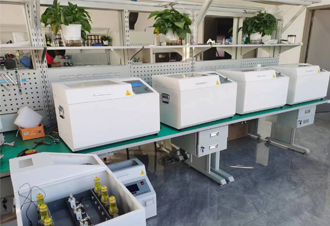 English
English



-
 Afrikaans
Afrikaans -
 Albanian
Albanian -
 Amharic
Amharic -
 Arabic
Arabic -
 Armenian
Armenian -
 Azerbaijani
Azerbaijani -
 Basque
Basque -
 Belarusian
Belarusian -
 Bengali
Bengali -
 Bosnian
Bosnian -
 Bulgarian
Bulgarian -
 Catalan
Catalan -
 Cebuano
Cebuano -
 China
China -
 China (Taiwan)
China (Taiwan) -
 Corsican
Corsican -
 Croatian
Croatian -
 Czech
Czech -
 Danish
Danish -
 Dutch
Dutch -
 English
English -
 Esperanto
Esperanto -
 Estonian
Estonian -
 Finnish
Finnish -
 French
French -
 Frisian
Frisian -
 Galician
Galician -
 Georgian
Georgian -
 German
German -
 Greek
Greek -
 Gujarati
Gujarati -
 Haitian Creole
Haitian Creole -
 hausa
hausa -
 hawaiian
hawaiian -
 Hebrew
Hebrew -
 Hindi
Hindi -
 Miao
Miao -
 Hungarian
Hungarian -
 Icelandic
Icelandic -
 igbo
igbo -
 Indonesian
Indonesian -
 irish
irish -
 Italian
Italian -
 Japanese
Japanese -
 Javanese
Javanese -
 Kannada
Kannada -
 kazakh
kazakh -
 Khmer
Khmer -
 Rwandese
Rwandese -
 Korean
Korean -
 Kurdish
Kurdish -
 Kyrgyz
Kyrgyz -
 Lao
Lao -
 Latin
Latin -
 Latvian
Latvian -
 Lithuanian
Lithuanian -
 Luxembourgish
Luxembourgish -
 Macedonian
Macedonian -
 Malgashi
Malgashi -
 Malay
Malay -
 Malayalam
Malayalam -
 Maltese
Maltese -
 Maori
Maori -
 Marathi
Marathi -
 Mongolian
Mongolian -
 Myanmar
Myanmar -
 Nepali
Nepali -
 Norwegian
Norwegian -
 Norwegian
Norwegian -
 Occitan
Occitan -
 Pashto
Pashto -
 Persian
Persian -
 Polish
Polish -
 Portuguese
Portuguese -
 Punjabi
Punjabi -
 Romanian
Romanian -
 Russian
Russian -
 Samoan
Samoan -
 Scottish Gaelic
Scottish Gaelic -
 Serbian
Serbian -
 Sesotho
Sesotho -
 Shona
Shona -
 Sindhi
Sindhi -
 Sinhala
Sinhala -
 Slovak
Slovak -
 Slovenian
Slovenian -
 Somali
Somali -
 Spanish
Spanish -
 Sundanese
Sundanese -
 Swahili
Swahili -
 Swedish
Swedish -
 Tagalog
Tagalog -
 Tajik
Tajik -
 Tamil
Tamil -
 Tatar
Tatar -
 Telugu
Telugu -
 Thai
Thai -
 Turkish
Turkish -
 Turkmen
Turkmen -
 Ukrainian
Ukrainian -
 Urdu
Urdu -
 Uighur
Uighur -
 Uzbek
Uzbek -
 Vietnamese
Vietnamese -
 Welsh
Welsh -
 Bantu
Bantu -
 Yiddish
Yiddish -
 Yoruba
Yoruba -
 Zulu
Zulu
Methods for Measuring Kinematic Viscosity in Various Fluids and Applications
Kinematic Viscosity Measurement Understanding Fluid Behavior
Kinematic viscosity is a critical property in fluid mechanics, representing the intrinsic resistance of a fluid to flow under gravitational forces. It combines the effects of a fluid’s dynamic viscosity and density, reflecting how a fluid’s thickness influences its movement and behavior under various conditions. Accurate measurement of kinematic viscosity is essential in numerous applications, ranging from engineering processes to environmental science and oil production.
The measurement of kinematic viscosity typically involves two main techniques the use of capillary viscometers and the rotational viscometer method. Both methods provide valuable insights into how fluids behave under different shear conditions.
Capillary Viscometers
Capillary viscometers, like the well-known Ubbelohde or Ostwald viscometers, function based on the principle of fluid flow through a narrow tube. The time it takes for a specific volume of fluid to flow between two marked points under the influence of gravity is measured. This time measurement is then used in conjunction with the viscometer’s calibration constant to calculate the kinematic viscosity.
One key advantage of capillary viscometers is their simplicity and relatively low cost. However, they are limited to Newtonian fluids and require careful temperature control, as viscosity is temperature-dependent. The fluid must also be free of bubbles, as any air entrapment can affect accuracy.
Rotational Viscometers
kinematic viscosity measurement

Rotational viscometers provide another method for measuring kinematic viscosity, suitable for both Newtonian and non-Newtonian fluids. These instruments measure the torque required to rotate a spindle immersed in a fluid at a known speed. The resulting data can be used to calculate viscosity under various shear rates, making rotational viscometers versatile tools for industries dealing with complex fluids like paints, polymers, and food products.
The major advantage of rotational viscometers is their ability to handle non-Newtonian fluids, which do not have a constant viscosity. They also allow for real-time viscosity measurements, benefiting processes that require continuous monitoring. However, these instruments can be more expensive and may require calibration for accurate results.
Applications and Importance
Kinematic viscosity plays a crucial role in many industries. In the petroleum sector, it is vital for determining the flow characteristics of oils and fuels. A lower kinematic viscosity indicates a more easily flowing fluid, which can influence pumping and transportation decisions. In the food industry, viscosity impacts texture and mouthfeel, making its measurement essential for product development.
Moreover, in environmental monitoring, kinematic viscosity aids in understanding the dispersion of pollutants in water bodies. It helps in assessing how chemicals spread and interact with aquatic ecosystems, providing vital data for pollution management and remediation efforts.
Conclusion
In summary, kinematic viscosity measurement is a fundamental aspect of fluid dynamics that helps us understand and predict fluid behavior across various applications. The choice of measurement technique, whether capillary or rotational, depends on the fluid type and the specific requirements of the process. With advancements in measurement technology, ongoing research continues to enhance our understanding and capabilities in fluid behavior analysis, underpinning many scientific and industrial endeavors.
-
Using Distillation Range Testers in the Food and Beverage IndustryNewsApr.16,2025
-
The Impact of IoT on Distillation Range Tester PerformanceNewsApr.16,2025
-
The Best Distillation Range Testers for Extreme ConditionsNewsApr.16,2025
-
How Distillation Range Testers Save Time and MoneyNewsApr.16,2025
-
Distillation Devices for Advanced Separation TechniquesNewsApr.16,2025
-
Common Mistakes to Avoid When Using a Distillation Range TesterNewsApr.16,2025



